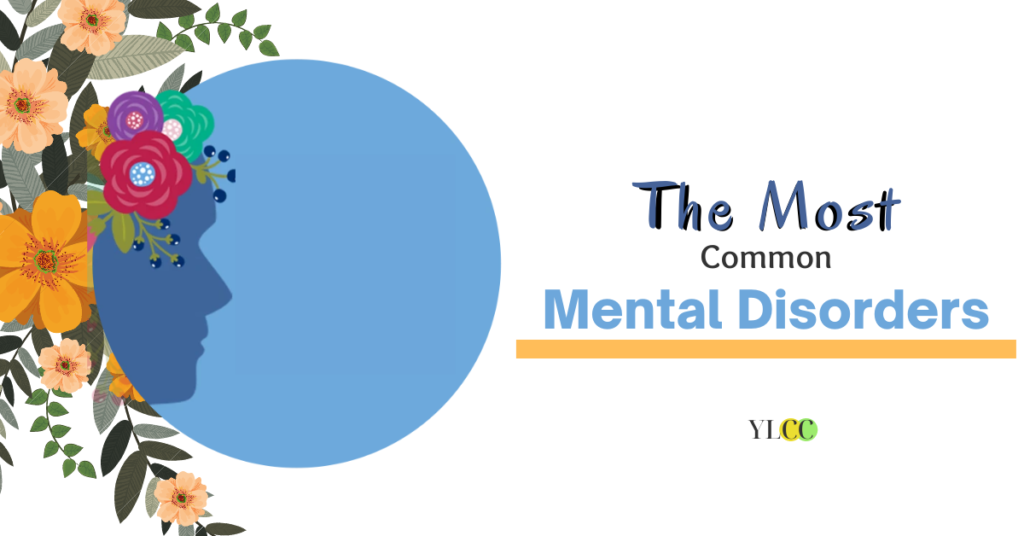
What are mental disorders?
Mental Disorders are also known as Mental Illnesses or Psychological Disorders. These are characterized by sudden change in feeling, cognition and attitude. Suffering or difficulties happening in social life, job, friends or family activities are connected with mental illnesses. Although difficult, agreement among psychologists and mental health experts on what experiences and acts define the existence of a psychological illness is critical. Disorders may be persistent, relapsing and remitting, or can occur as a single episode. Many disorders have been reported, with indications and symptoms varying greatly amongst them. A mental health practitioner, often a clinical psychologist/therapist or psychiatrist, can diagnose such illnesses.
The study of psychological illnesses, including their symptoms, etiology and therapy, is known as psychopathology. As it has been said earlier, reaching to an agreement could be challenging, thus it is critical as well as important for mental health experts to agree on what types of thoughts, feelings, and actions are actually aberrant in the sense that they indicate the existence of psychopathology. Since 2019, the most common mental disorders worldwide are depression, which has preyed upon approximately 264 million people; bipolar disorder, affecting approximately 45 million people; dementia, affecting approximately 50 million people, and schizophrenia and other psychoses, affecting approximately 20 million people. Neuropsychiatric diseases include intellectual impairment and autism spectrum disorders, which often appear in infancy or childhood. Stigma and prejudice can exacerbate the pain and impairment associated with mental illnesses, resulting in a variety of social groups aiming to enhance awareness and fight social exclusion.
This article discusses the most common mental disorders in detail. Read on!
Depressive Disorders– Depression is a common component of the human condition. When someone faces personal loss or when they face a life hardship, such as a divorce or a major disease, he or she may feel upset or melancholy. These sensations are usually fleeting. However, when someone has continuous and severe emotions of sorrow for a lengthy period of time, they may be suffering from a mood illness.
- Major Depressive Disorder: MDD, often known as chronic depression, is a serious medical disease that can have a wide-ranging impact on your life. It has an effect on mood and behavior, as well as bodily processes such as hunger and sleep. Symptoms of this are – A) Depressed mood almost every day. B) Markedly diminished interest in all activities, most of the days. C) Significant weight loss, when not even dieting or weight gain, or decrease in appetite. D) Regular Insomnia or Hypersomnia. E) Feelings of worthlessness and inappropriate guilt. F) Recurrent thought of death.
Treatment such as medications and psychotherapy are mostly effective for individuals suffering from this. A doctor or a psychiatrist might help him to get rid of the symptoms; alternatively, some might benefit from a psychologist or a therapist. If case of severe symptoms, the patient should be admitted in the hospital for some days.
- Persistent Depressive Disorder (Dysthymia): If you are suffering from persistent depressive illness, you may find it difficult to be cheerful even on pleasant occasions, you may be regarded as having a gloomy disposition, always moaning, or being incapable of enjoying pleasure. Though persistent depressive illness is not as severe as major depression, your present state of depression might be mild, moderate, or severe. Here, most of the symptoms are same as Major Depressive Disorder, in addition to others such as a) they have low self-esteem, b) difficulty in making decisions, c) feelings of hopelessness, d) irritability.
Hence, the treatments are mostly same as above. It includes medication and talk therapy. The talk therapy basically depends on the symptoms, and it is more prevalent among children and adolescents.
Bipolar Disorder: Bipolar disorder is mainly brain condition characterized by fluctuations in a person’s mood, energy, and ability to operate. People with bipolar illness have strong emotional states that generally occur over a period of days to weeks or even months, which is referred to as a mood episode. These mood swings are classified as manic/hypomanic (excessively joyful or irritated mood) or depressed (sad mood). This type of disorder leads to disturbed relationships with loved ones and interferes with working or going to school or college. It can be caused due to some environmental variables such as stress, sleep disturbance, and drugs and alcohol. Though the precise origins of bipolar illness inside the brain are unknown, it is known that an imbalance of brain chemicals leads to dysregulation of brain activity. The typical onset age is 25 years old.
There are three types of bipolar disorder- Manic Episodes, Hypomanic Episodes and Cyclothymic disorder.
- Manic Episodes: A manic episode is described as a duration of at least one week or so during which a person is extremely elated or irritable for most of the day, has more energy than usual, and exhibits at least three of the following behavioral changes: faster speech, distractibility, increased activity, or risky behavior.
- Hypomanic Episode: A hypomanic episode is distinguished by less severe than manic symptoms, which continues no more than four days straight rather than a week. Hypomanic symptoms do not typically create the main issues in everyday functioning as manic episodes do.
- Cyclothymic Episode: Experience of at least two years of many times of hypomania symptoms and periods of depressed symptoms (or one year in adolescents and teens) (though less severe than major depression).
Autism Spectrum Disorder: Autism spectrum disorder (ASD) is referred to as a complex developmental illness characterized by persistent difficulties in social interaction, spoken and nonverbal communication, and confined and repetitive activities. Autism spectrum disorder originates in early childhood and later creates difficulties in functioning in society — for example, socially, in school, at work, and so on. Symptoms of autism are frequently seen in children within the first year of life. A tiny proportion of children appear to grow normally in the first year, but subsequently have regression between the ages of 18 and 24 months, when they acquire autistic symptoms.
Symptoms of this illness are- A) failure to respond when called, B) Diminished ability of eye contact and lack of expression, C) Inability to pronounce words properly or speak fluently, D) Inability to understand directions or instructions, E) Exhibits repetitive movements of body, F) has food choices, G) Increased sensitivity to light, sound or touch.
Treatments can involve rigorous skill-building and instructional sessions known as applied behavior analysis (ABA), as well as a variety of other interactive, child-centered forms of behavioral treatments. On a regular basis, inclusion of parent education and support, speech and language therapy, occupational therapy, and/or social skills training is practiced. Additionally, some children and people with ASD have additional types of psychological problems, such as anxiety, ADHD, disruptive behaviors, or depression, at some time in their life. These issues can be addressed by counselling or medicine. To assist kids with autism, conventional and special education classrooms might be modified to suit their specific needs.
 Schizophrenia: Schizophrenia is known to be a severe mental illness in which people have an aberrant interpretation of reality. Schizophrenia includes hallucinations, delusions, and severely disorganized thought and behavior that interfere with everyday functioning and can be debilitating. Schizophrenia patients must be treated for the rest of their lives. Early therapy may help manage symptoms before significant problems arise, improving the long-term outlook.
Schizophrenia: Schizophrenia is known to be a severe mental illness in which people have an aberrant interpretation of reality. Schizophrenia includes hallucinations, delusions, and severely disorganized thought and behavior that interfere with everyday functioning and can be debilitating. Schizophrenia patients must be treated for the rest of their lives. Early therapy may help manage symptoms before significant problems arise, improving the long-term outlook.
The complications of schizophrenia may explain why there are so many misunderstandings about the condition. Schizophrenia does not imply having a split personality or having many personalities. The majority of persons with schizophrenia are no more aggressive or destructive than the average person. The majority of persons suffering with schizophrenia live with their families, in group homes, or on their own.
Positive symptoms include hallucinations that is hearing voices or seeing things that do not exist, paranoia, and exaggerated or distorted perceptions, beliefs, and behaviors.
Negative symptoms include those are abnormally absent. A loss or deterioration in one’s capacity to think and make plans, talk, convey emotion, or find pleasure.
Symptoms of disorganization include confused and disorganized thinking and speech, difficulty with rational reasoning, and occasionally odd behavior or aberrant motions.
Treatment for schizophrenia needs lifelong therapy. Typically, treatment is guided by a psychiatrist who has expertise treating schizophrenia. To coordinate care, the treatment team may also comprise a psychologist, social worker, psychiatric nurse, and even a case manager. In clinics with experience in schizophrenia therapy, the full-team approach may be provided. While there is no definitive cure for schizophrenia, science is paving the way for more inventive and safer therapies. Experts are also investigating genetics, doing behavioral studies, and utilizing sophisticated imaging to examine the structure and function of the brain, which may bring up new strategies and techniques.
Obsessive Compulsive Disorder: is a condition in which people have repeated, unwelcome thoughts, ideas, or feelings (obsessions) that cause them to feel compelled to do something again and over again (compulsions). Hand washing, checking on items, and cleaning are some examples of repeated habits that can severely interfere with a person’s everyday tasks and social interactions. You can try to ignore or stop your obsessions, but doing so will simply make your condition worse. Finally, you feel compelled to engage in obsessive behavior in order to alleviate your tension. Despite efforts to avoid or eliminate troublesome thoughts or desires, they return. The obsessions or compulsions are time-consuming, or may cause medically significant distress or impairment in social, occupational and other areas of functioning.
Symptoms may include fear of becoming contaminated by touching items that have been touched by others, you are uncertain if you have secured the door or turned off the burner, when items are not in order or are not looking in the same direction, there is a lot of tension, mental images of crashing your automobile into a crowd, counting in certain patterns, repeating a prayer, statement, or phrase silently, embarrassing sexual ideas or pictures, fear of uttering profanity or insults and invading thoughts of noises, pictures, phrases, or numbers on a regular basis.
Patients with OCD who receive adequate therapy typically have a higher quality of life and enhanced functionality. Treatment may enhance a person’s capacity to perform at school and work, create and enjoy relationships, and engage in recreational activities. Cognitive Behavioral Therapy (CBT), medications, caregiver interventions, and self-care are some of the treatments available.
YLCC would like to thank Shatakshee Chatterjee for her valuable inputs in this article.






